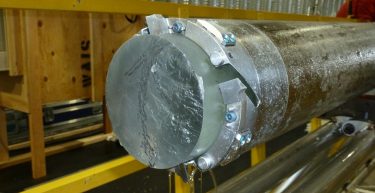
The global climate is a complex machine in which some pieces are separate, yet others are connected. Scientists try to discover the connections to predict what will happen to our climate, especially in a future with more heat-trapping gases.
A dramatic pattern in our planet’s climate history involves paroxysms in Arctic temperatures. During the last ice age, tens of thousands of years ago, Greenland repeatedly warmed by about 10 degrees Celsius over just a few decades and then gradually cooled. Meanwhile the Southern Hemisphere climate stayed fairly stable, with only weak and long-delayed echoes of the temperature chaos up north.
But new University of Washington research shows the fierce winds circling Antarctica — an important lever on the global climate — shifted quickly in response to the Northern Hemisphere temperature spikes.
“It’s most surprising that we can see these really abrupt changes in the Northern Hemisphere making it very quickly to the Southern Hemisphere,” said first author Bradley Markle, a UW doctoral student in Earth and space sciences. “The atmospheric circulation is tightly connected across the globe during these events.”
The study is published in the January issue of Nature Geoscience.
Read more at UW Today »
